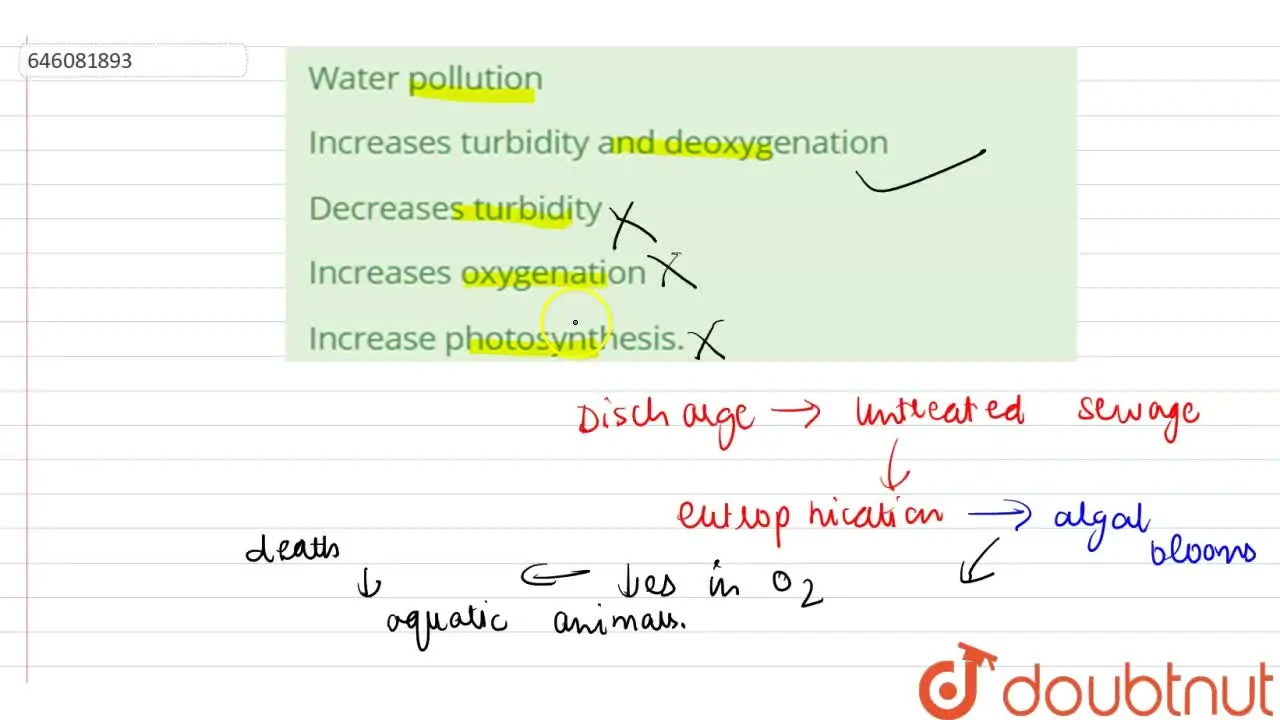Water pollution
Increases turbidity and deoxygenation
Decreases turbidity
Increases oxygenation
Increase photosynthesis.
The correct Answer is:A
Step by step video & image solution for Water pollution by Biology experts to help you in doubts & scoring excellent marks in Class 12 exams.
Related Playlists
- BOOK - DINESH PUBLICATION ENGLISHCHAPTER - ENVIRONMENTAL ISSUESEXERCISE - Check your grasp18videos
ENVIRONMENTAL ISSUES
- BOOK - DINESH PUBLICATION ENGLISHCHAPTER - ENVIRONMENTAL ISSUESEXERCISE - Brain teasers-X145videos
ENVIRONMENTAL ISSUES
- BOOK - DINESH PUBLICATION ENGLISHCHAPTER - ECHINODERMATAEXERCISE - REVISION QUESTIONS65videos
ECHINODERMATA
- BOOK - DINESH PUBLICATION ENGLISHCHAPTER - EVIDENCES OF EVOLUTIONEXERCISE - CHECK YOUR GRASP19videos
EVIDENCES OF EVOLUTION
Similar Questions
Which is correct matched ? 1. Arsenic poisoning -Black foot disease. 2. Secondary Effluent treatment-Biological process. 3. Pyrolysis -Solid soil waste disposal. 4. Tubifex -Water pollution indicator. 5. Biomagnification -Degradable pollutants.
View SolutionBlack water fever is caused due to
(a) Nitrate pollution in water
(b) Infection of Leishrmiania donovani
(c) Infection by sporozoan Plasmodium
(d) Infection of Yersinia pestisView SolutionMost abundant water pollutant is
View SolutionMost common and commerical water pollutant is
View SolutionMost common and commerical water pollutant is
Industrial waste ; Fertilizers ; Detergents ; PCB'sView SolutionWhat is biological magnification ? Explain how DDT as a water pollutant undergoes biological magnification .
View SolutionThermal pollution of water bodies is due to discharge of
View SolutionPollution of water originates from human activities. Through different paths, pollution reaches surface or ground water. Which of the following are true ?
View SolutionWhich is not a water pollutant?
View SolutionName the three important water pollutants.
View Solution


